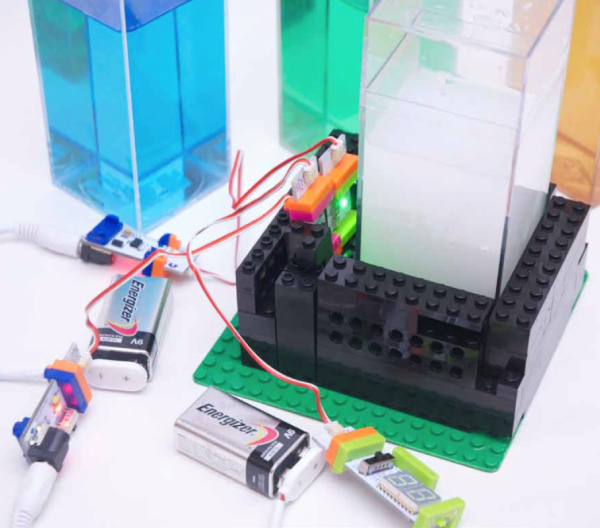Spectrophotometer Activity with littleBits™
Source: Oceanography
[14-Dec-2015] This activity demonstrates optical properties of water: that different constituents in water affect the transmission, absorption, and scattering of different colors in the visible light spectrum. Inexpensive, off-the-shelf components are used to build a light sensor and source, creating a simple spectrophotometer that can measure light absorption.In the second part of this activity, principles of ocean color remote sensing are applied to measure reflectance. Using components that are clearly visible allows students to configure them in different ways. Playing with the instrument design gives students a practical understanding of spectrophotometers, in-water optics, and remote sensing. Students are encouraged to think about how ocean color is used to estimate the concentration of chlorophyll, colored dissolved organic matter, and suspended sediments.
For step by step activity instructions, check out page 2 of the What Color is the Ocean? brochure. Spectrophotometer Activity with littleBits™ (PDF, 335 KB)


